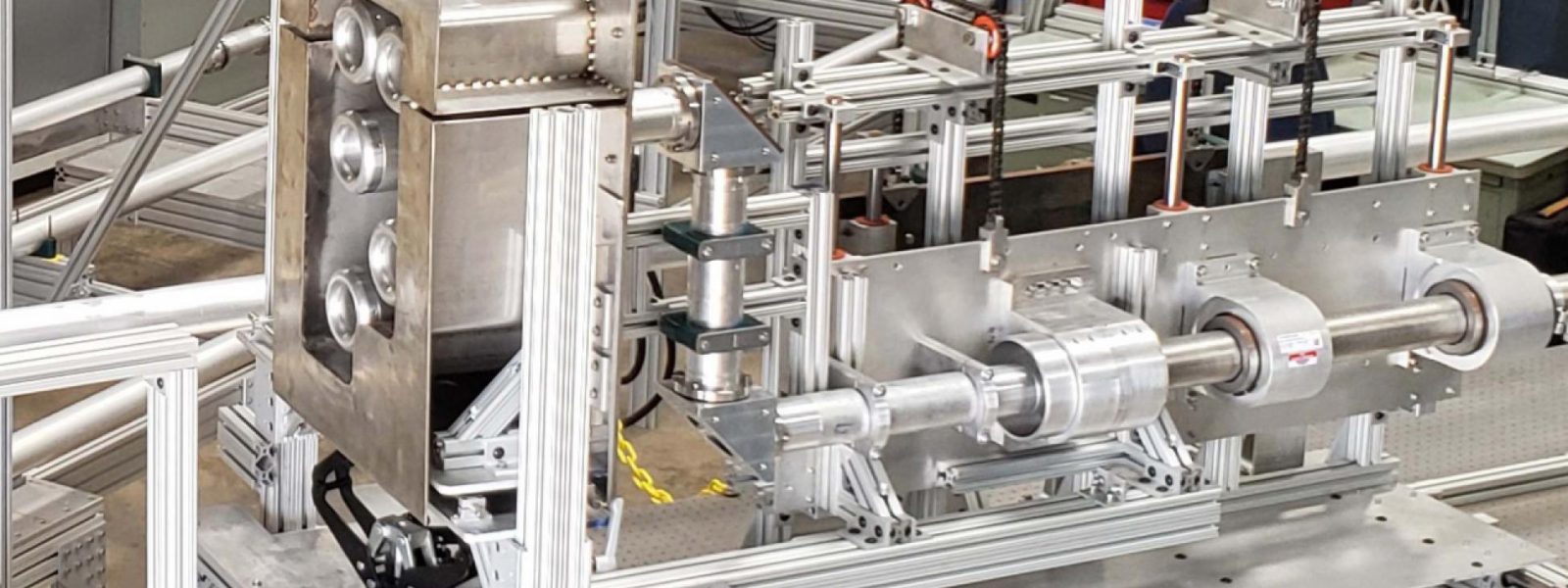–Adriana Ghiozzi for US ITER
As the first phase of ITER tokamak assembly begins, the US ITER diagnostics team is busy preparing the systems essential for first plasma. The team, which is based out of Princeton Plasma Physics Laboratory and is responsible for a total of seven ITER diagnostics, will hold a final design review in summer for the first of those systems: an antenna array for the low-field side reflectometer (LFSR) that will gather data from the outer layers of the ITER tokamak plasma.
“The reflectometer, in the most basic sense, is a radar system,” said Chris Muscatello, a physicist with General Atomics, the main subcontractor for the LFSR project.
From a conceptual standpoint, the LFSR diagnostic is fairly straightforward: a suite of electronic equipment produces a frequency-modulated (FM) millimeter-wave signal—a type of microwave—and shoots it into the tokamak to the plasma. The plasma reflects the wave, and an antenna system collects that return microwave signal. The signal is transmitted back to the same suite of electronic equipment which measures the resulting change in the phase of the wave.
Although that measured signal is tiny – with power on the scale of milliwatts – it can unpack a wealth of information about the behavior and stability of a tokamak plasma.
ITER discharges will start up in a lower performance operating mode (L-mode) and quickly transition to a high performance (H-mode) with higher plasma temperatures and density, and thus dramatically higher fusion reaction rate.
“ITER has to get into the H-mode to meet its performance goals and accomplish its mission,” said Hutch Neilson, the US ITER diagnostics team lead.
ITER is the first fusion device designed to produce a burning, or self-heated plasma, and will demonstrate 500 MW of fusion power.
The LFSR is the first device of its kind to measure the plasma density, and process and report the data to the central tokamak control system in real-time. This allows it to serve as an alert system, as abrupt changes in the steepness of the edge density profile, or gradient, can lead to instabilities known as edge localized modes (ELMs), which release large amounts of energy.
“LFSR has very fast time resolution so that it can see the gradient changes associated with these ELMs,” Neilson said.
Although similar devices are used to measure plasma density on a variety of other tokamaks around the world such as ASDEX Upgrade in Germany and DIII-D in the US, the ITER version combines the most cutting-edge features of each of them.
“We’re leveraging our experience with DIII-D to improve our understanding of what happens in a plasma, while at the same time building a mockup of the LFSR system,” Muscatello said.
One of those cutting-edge features emanating from the design of the DIII-D reflectometer, is the antenna system, which is the delivery mechanism for the traveling microwaves. Originally, ITER was slated to use a bistatic antenna system, or one in which the incoming and outgoing microwaves each travel via separate send and receive antennas. However, since the system has to share its port plug with a host of other ITER systems, the plan was changed to use a monostatic antenna array, so that the incoming and outgoing signals share one antenna.
“The decision to go monostatic was made for reasons of limited space,” said Neilson.
Though it may seem strange to count millimeters in the world’s largest fusion device, both the antenna array and the entire system must be designed to extremely tight tolerances to protect the integrity of the signal. Misalignments of the waveguides that transmit the microwaves, even by tiny distances, can lead to huge decreases in received signal strength.
On top of all that, the LFSR makes its home in one of the most hostile sections of the ITER device, namely right next to the plasma. Fast neutrons could overheat the inner components of the antenna array to extreme temperatures if not for a network of active water-cooling channels. The system also must be designed to withstand large electromagnetic forces.
“Despite all these challenges, it still has to work,” said Neilson. “We’re in the burning plasma environment for the first time, and ITER is going to make 500 megawatts of fusion power for minutes so, in terms of nuclear environments, it’s a huge but welcome challenge.”
US contributions to ITER are sponsored by the U.S. Department of Energy Office of Science and managed by UT-Battelle at Oak Ridge National Laboratory in Tennessee, with contributions by partner labs Princeton Plasma Physics Laboratory and Savannah River National Laboratory. For more information, see https://usiter.org. The Office of Science is the single largest supporter of basic research in the physical sciences in the United States and is working to address some of the most pressing challenges of our time. For more information, please visit https://science.energy.gov.
Media Contact: Lynne Degitz
